This article was medically reviewed by Troy A. Miles, MD. Dr. Miles is an Orthopedic Surgeon specializing in Adult Joint Reconstruction in California. He received his MD from the Albert Einstein College of Medicine in 2010, followed by a residency at the Oregon Health & Science University and fellowship at the University of California, Davis. He is a Diplomat of the American Board of Orthopaedic Surgery and is a member of the American Association of Hip and Knee Surgeons, American Orthopaedic Association, American Association of Orthopaedic Surgery, and the North Pacific Orthopaedic Society.
This article has been viewed 166,134 times.
Experts agree that broken arms require immediate medical treatment, as the right treatment for you will depend on the place and severity of your break. If your arm is broken, you'll likely notice severe pain, swelling, bruising, an inability to turn your arm, or a misshapen arm.[1] Research suggests that broken arms typically take a month or 2 to heal, and during that time you will likely need to keep your arm immobilized in a cast.[2] Fortunately, your doctor can apply a cast to help your bone heal properly.
Steps
Preparing the Arm for a Cast
-
1Recognize a broken arm. Broken arms will usually be very easy to identify. If you think you or your child has a broken arm, go immediately to the emergency room so it can be treated. Symptoms include:[3] [4]
- Extreme pain
- Swelling
- Bruising
- Dizziness or lightheadedness right after the break occurs
- The arm is bent in a way that it shouldn’t be
- The person is unable to move his wrist or fingers
- A snapping or grinding noise when the injury occurred
- Bleeding and pieces of bone sticking out through the skin
-
2Make the person as comfortable as possible on the way to the hospital. Remember that if the break is complex, it may be necessary for the person to get anesthesia while the doctor moves the pieces of bone back into place. Do not give the person anything to eat or drink.[5]
- Use an ice pack to reduce the person’s pain and swelling. Wrap a bag of ice or package of frozen peas in a towel. After 20 minutes, give the skin a chance to warm up.
- You can use a large towel to help the person support the arm in a sling or prop up the arm. Do not move the arm, that could cause more damage.
Advertisement -
3Have the doctor splint the arm. The splint will be put on the arm to immobilize it while the doctor examines it. The splint is hard on one or two sides, but open on the other in case the arm continues to swell. The splint will have several layers:[6]
- Soft cloth to protect the skin against irritation
- Soft padding
- Plaster or fiberglass to prevent movement
- An elastic bandage to hold the pieces of the splint in place
-
4Allow the doctor to examine the arm. The doctor will want to look at the arm, feel the arm, and will probably order X-rays. X-rays will create an image of the bones in the arm and help the doctor determine whether they need to be realigned so that they will heal in the correct position.[7]
- For minor fractures where the bones remain correctly aligned, no additional procedures may be needed before putting a cast on the arm.
- If the bones are not aligned, the doctor will give the person anesthesia to either numb the area or put her to sleep. Then the doctor will try to move the bones back into place.
- If this is not possible, the doctor may need to do surgery. This is more likely to be necessary when a joint has been broken. Surgery may also be necessary if wires, plates, screws, or pins are needed to hold the pieces of bone in place.
Receiving the Cast
-
1Ask the doctor what type of cast will be put on. Depending upon which bone is broken, the cast may be either short or long.
- A short arm cast is usually used if a wrist bone is broken. This cast would extend from the knuckles to below the elbow. (Sometimes a long cast will be used to prevent the person from twisting his wrist and putting it out of alignment.)
- A long arm cast is put on if the forearm or elbow is broken. The cast would go from the knuckles to the upper arm.
- Fractures of the humerus (upper arm) are treated either with a sling or a brace, but not a cast.
-
2Ask the doctor what the cast will be made of. A cast is a hard bandage that protects the bone as it heals. The hard, outer shell is lined within with soft padding that will make it more comfortable. There are two types of materials that casts are sometimes made of:
- Plaster. Plaster is a white powder that is mixed with water and then allowed to harden into the outer shell of the cast. Plaster is easier to work with because it sets more slowly. This gives the doctor more time to work. It also means it gives off less heat, making burns less likely.[8]
- Fiberglass. Fiberglass is a type of plastic. It is lasts longer, is lighter, and is better for X-rays than plaster.
-
3Watch your doctor assemble the necessary materials. This may include:[9]
- Tape
- Scissors
- A basin of water. The water temperature affects how quickly the casting material will set. It will set faster with warmer water. In general for plaster casts, the water should be lukewarm. For fiberglass the water should be room temperature or cooler.
- Casting gloves, if your doctor will use fiberglass
- Padding
- Plaster or fiberglass casting material
- Sheets or pads to cover you and keep your clothing clean
- A stockinette
-
4Allow the doctor to prepare your arm. The doctor will put on the padding which will go on the inside of the cast.[10]
- The doctor will first position your arm so that the bones will heal correctly.
- You will first have a stockinette put on your arm. It will likely be about 4 inches longer above and below the injured area that the doctor will put the cast on. The stockinette will likely be 2 or 3 inches wide. The doctor will smooth it to prevent it from wrinkling. The doctor may not use a stockinette if the arm is expected to swell a lot.
- The doctor will wrap your arm in padding. Each layer will overlap the previous by about 50%, producing a double layer over your arm when the doctor is done. The doctor may add more layers, particularly over the fingers or other bony areas. The padding used on your hands will likely be about 2 inches wide, while the padding used on your arm may be up to 4 inches wide. The padding should be an inch and a half longer at either end than the area that the cast will cover. It should not restrict blood flow.
-
5Observe as your doctor applies the cast. The doctor will wrap the casting material around the arm. Each new layer will overlap the previous by about 50%, creating a double layer without holes. Right before adding the final layer, the doctor will fold back the ends of the stockinette and padding, and add the final layer over them. As the casting materials set, the doctor will adjust their shape by molding them. It is important that the tension be correct:[11]
- If the cast is too tight it may restrict the blood flow or irritate the skin.
- If the cast is too loose or has too much padding it may move on the arm, rub, and cause scratches and blisters.
-
6Tell your doctor if the cast feels hot. The cast gives off heat when it sets and this can be uncomfortable if too much heat is produced. Two factors affect the amount of heat produced. The amount of heat is:[12]
- Inversely proportional to the setting time. This means that casts that set more slowly produce less heat at any one moment.
- Directly proportional to the number of layers used. This means the more casting material used, the greater the amount of heat that will be produced.
Taking Care of the Cast
-
1Monitor the arm for complications. How long the cast will have to stay on will depend on how long it takes to heal. Children heal faster than adults do, but chances are that the cast will have to stay in place for several weeks. If you notice any of the following signs of complications, go to the emergency room to have the cast removed:[13] [14]
- Increasing pain
- Tingling
- Numbness
- Extreme swelling
- White, blue, purple, or dusky colored fingers
- Decreased blood flow
- Loss of movement that was previously present in the fingers
- Blistering or red skin under the cast
- Fluid draining from the cast
- A bad odor coming from the arm
- A fever
-
2Keep the cast dry. Unless the doctor tells you that your cast is waterproof, you should keep it dry. If the cast gets wet, it can weaken or warp. This will make it less effective at protecting and stabilizing the bones. You can be sure to keep it dry by:
- Covering it in a plastic bag when bathing
- Wearing a raincoat or using an umbrella when you are outside in the rain.
-
3Do not put anything into the cast. As the arm heals, it may itch. However, you should avoid doing anything that may damage the cast or injure your arm. This means that you should not:
- Insert anything like a pen inside the cast to scratch. This may damage the inside of the cast or, if you cut yourself, cause the skin to become infected.
- Put anti-itch medicines inside the cast. This includes baby powder, lotions, creams, or anti-itch oils.
-
4Do not pull on the soft lining or break off pieces of the cast. If the cast gets damaged or broken, call the doctor to get a new one put on.
- As the arm heals, a child may stop being as careful with the arm that is in the cast. Inspect the cast regularly to make sure that it has no cracks or tears in it.
- If you have a cast that you can write on, ask family and friends to sign it with encouraging messages.
References
- ↑ https://www.nhs.uk/common-health-questions/accidents-first-aid-and-treatments/how-do-i-know-if-i-have-broken-a-bone/
- ↑ https://www.nhs.uk/conditions/broken-arm-or-wrist/
- ↑ https://www.rch.org.au/kidsinfo/fact_sheets/Fractures_broken_bones/
- ↑ http://www.nhs.uk/conditions/broken-arm/Pages/Introduction.aspx
- ↑ http://www.nhs.uk/conditions/broken-arm/Pages/Introduction.aspx
- ↑ http://www.nhs.uk/conditions/broken-arm/Pages/Introduction.aspx
- ↑ http://www.nhs.uk/conditions/broken-arm/Pages/Introduction.aspx
- ↑ https://www.nhs.uk/conditions/broken-arm-or-wrist/
- ↑ http://www.aafp.org/afp/2009/0101/p16.html
About This Article
Before applying a cast to a broken arm, the doctor will splint the arm to immobilize it and then probably order X-rays. If you broke your wrist, you'll likely get a short arm cast, but if you broke your forearm or elbow, you'll get a long cast instead. You can also ask your doctor what your cast will be made of, keeping in mind that plaster is easier to work with, but fiberglass is lighter and longer lasting. As your doctor wraps casting material around your arm, let them know if it feels too tight, too loose, or hot, and they can adjust. For more advice from our Medical co-author, like why you should keep your cast dry, keep reading!
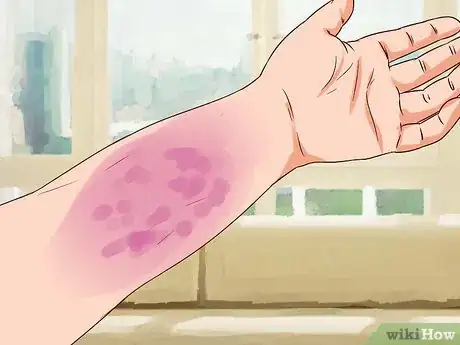
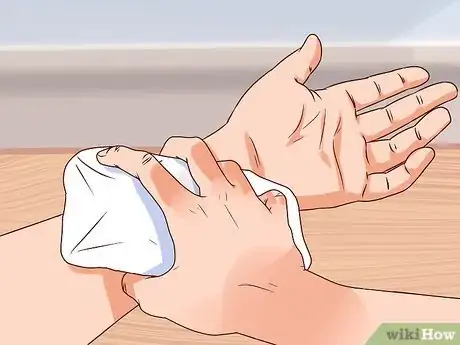
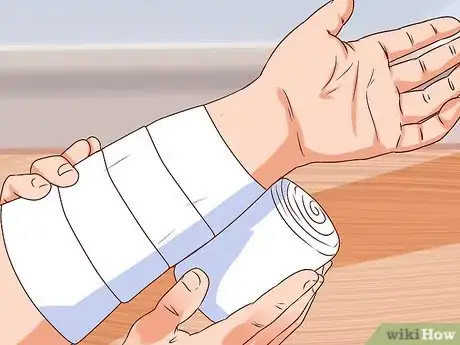

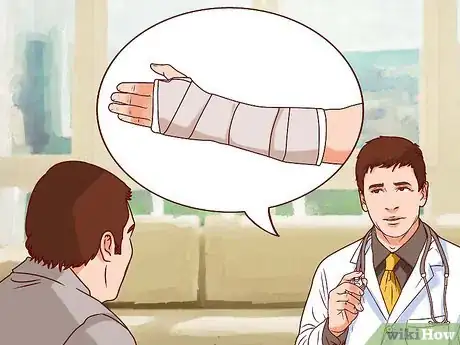



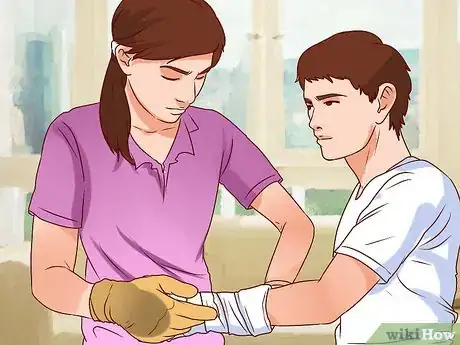
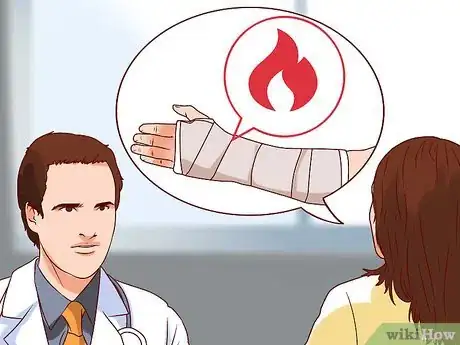
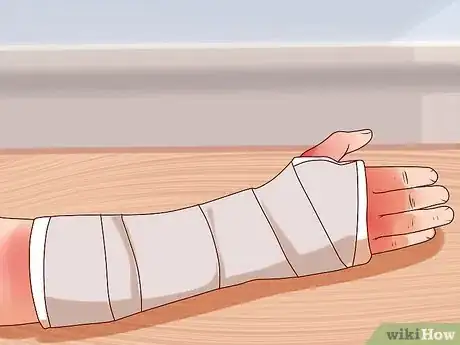
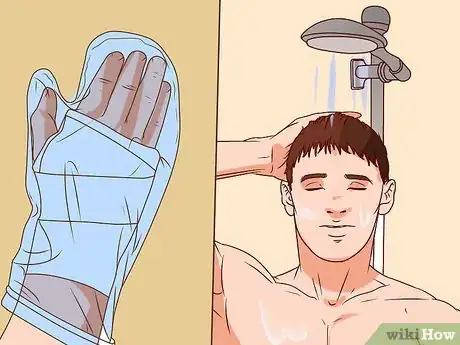
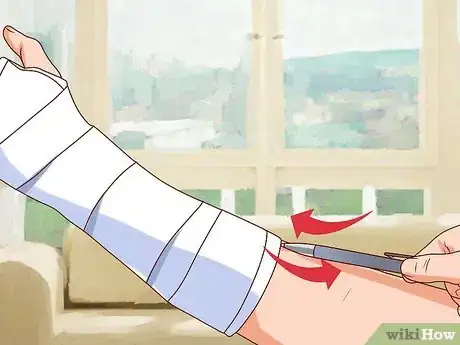
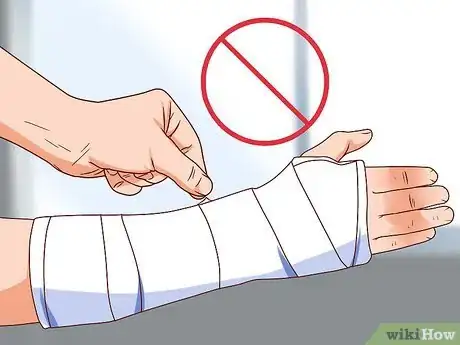
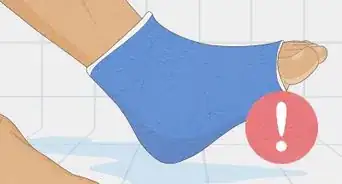


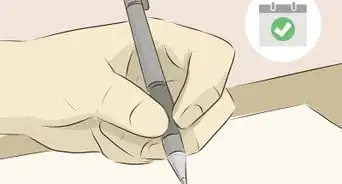
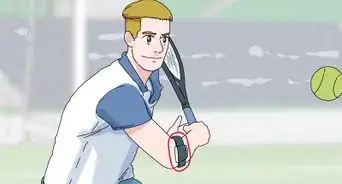
-Step-15-Version-3.webp)



















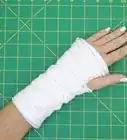




































Medical Disclaimer
The content of this article is not intended to be a substitute for professional medical advice, examination, diagnosis, or treatment. You should always contact your doctor or other qualified healthcare professional before starting, changing, or stopping any kind of health treatment.
Read More...